If you have ever wanted to grow your own peanuts but thought it was impossible because of the long growing season or the climate where you live – you need to try your hand at growing peanuts in pots and containers!
Not only can you grow a delicious crop nearly anywhere – you will have quite the conversation piece with your friends, family and neighbors. After all, it’s not everyday you get to see someone growing peanuts in a pot!
Peanut plants are actually quite interesting to grow. They are unique in that they flower like a traditional vegetable plant – but instead of producing their “fruit” above ground, they send what are called pegs down into the dirt to produce their nuts under the soil surface.
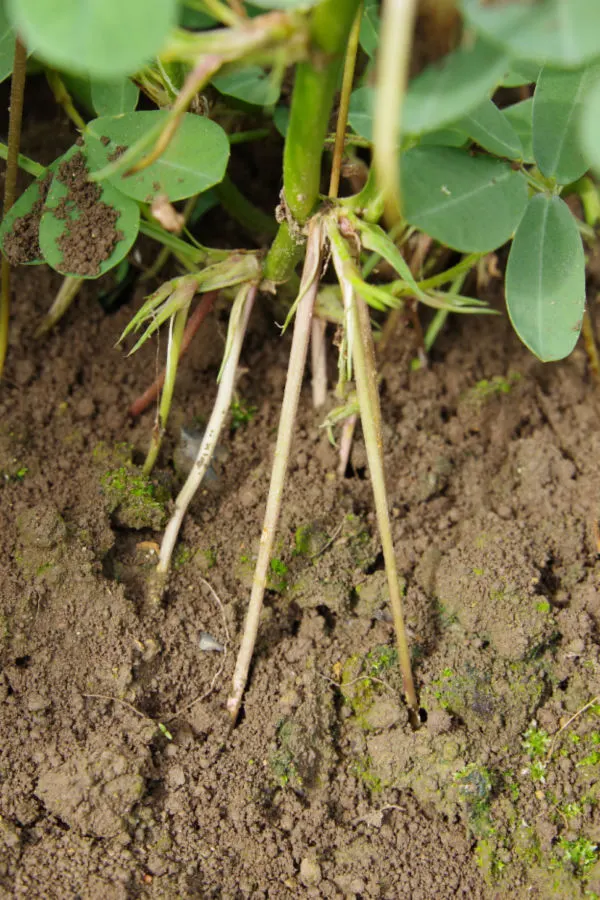
Long Seed To Harvest Time – How To Grow Peanuts In Pots & Containers
In traditional garden settings, peanuts can only grow areas with long summers. What makes them so hard to grow for many gardeners is their lengthy seed to harvest time. In fact, varieties can take anywhere from 120 to 150 days or more before they mature and are ready for harvesting.
Unfortunately, that four to five month requirement time can be hard to squeeze in for many climates. Especially when you consider that peanuts are an annual plant and cannot handle a frost or freeze.
In the south and in warmer climates, that long seed to harvest time is not an issue. But in the north or any place where the last frost of the spring season is later, and the first frost can occur as early as September or October, there simply isn’t enough time for plants to mature from seed planted in the ground.
But the good news is that if you really want to grow peanuts in these cooler climate areas – you still can. You just have to start your seeds indoors, and plant them into pots which can be protected when and if cold weather arrives. And can it ever be fun to do!
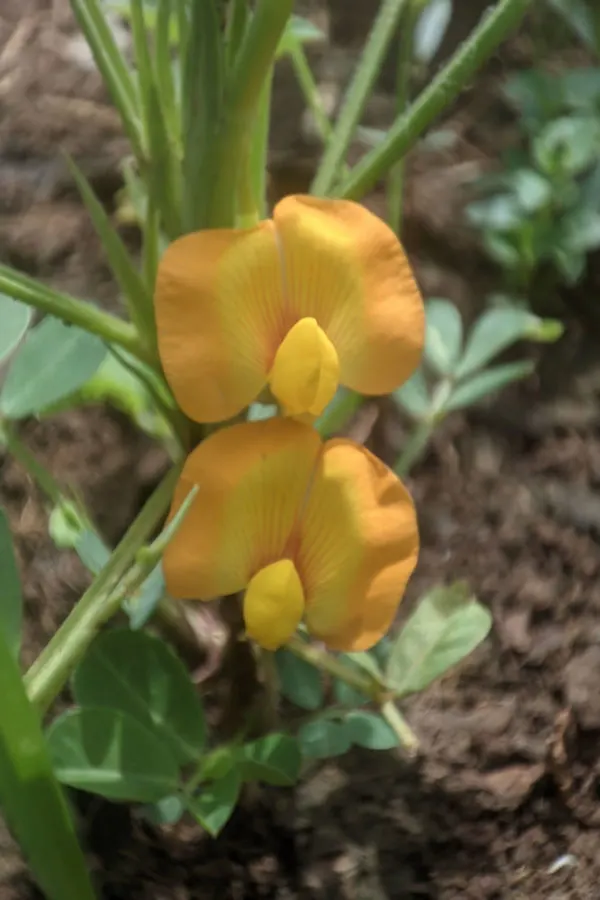
With that in mind, here is a look at how to plant and grow your own peanuts in pots and containers, and enjoy the peanut growing process no matter where you might call home!
How To Grow Peanuts In Pots & Containers
Growing peanuts in containers actually offers quite a few advantages. For starters, it doesn’t require using up a large space in your garden throughout the spring and summer. As long as you place your containers where they will get enough sunlight, the peanuts will grow.
In addition, pots and containers are easy to insulate from bad weather. If the temperatures do get cool, pots are easy to move indoors or cover. Even better, it doesn’t require special soil. As it turns out, peanuts grow perfectly well in basic potting soil.
Before we dive into selecting your peanuts and planting your containers, it’s first important to understand the life cycle of the peanut plant. Knowing exactly how they grow can make planting and maintaining your peanuts a much easier process!
How Peanuts Grow – How To Grow Peanuts In Pots & Containers
The seed of a peanut is the actual nut, not the entire shell that often contains two (seeds) peanuts. Peanut seeds will usually germinate in about seven to ten days after planting. It is very important for the soil and air temperature to be warm, as peanuts will not germinate in cold soil.

About 35 to 45 days after germinating, flowers will begin to appear on a peanut plant. At the flowering stage, the plant will usually be around 18 inches tall. This is where the fun begins as the unique growing pattern of the peanut begins to take place.
After flowering, pegs, which are small offshoots from the flower, will begin to appear and move downwards and penetrate the soil. The pegs then turn sideways under the soil and begin to produce peanut pods.
It can vary a bit with each variety, but most peanuts usually begin to form under the soil at around the four month mark. Once they begin to form their nuts, it usually takes another three to four weeks to fill them out to be ready for harvest.
To harvest peanuts, it is as simple as digging up the plants. The pegs and peanuts under the soil will all come out together. Once out of the soil, the peanut plant should be dried above the soil for a week or two.
At that point – the peanut pods can be separated and are ready to go! Now that you know how a peanut plant will grow from seed to harvest, let’s take a look at how to plant them in containers!
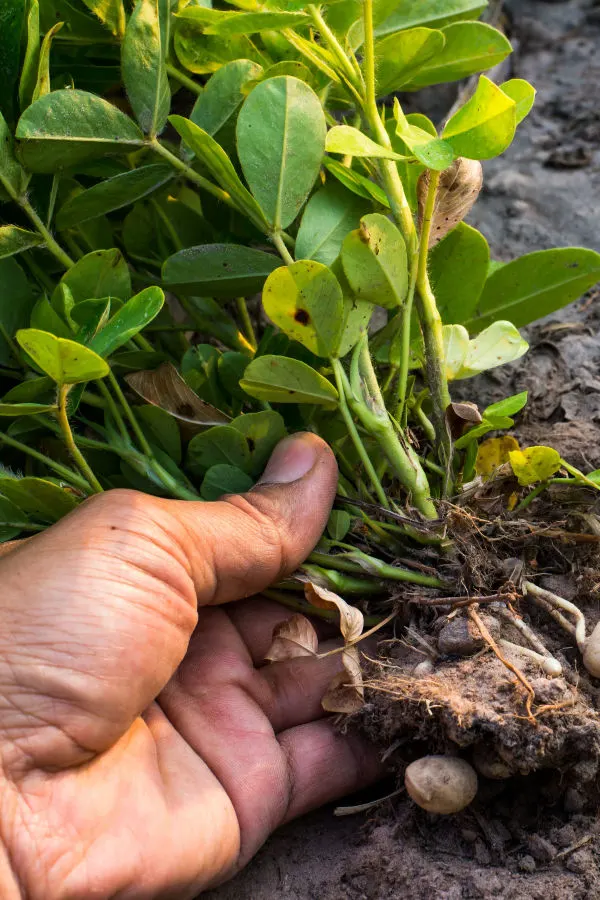
How To Plant Grow Peanuts In Pots & Containers
Not all peanuts have a harvest cycle spanning 150 days or longer. Some peanut variants have shorter cycles and these are the best for container growing. Runner peanuts (135 days) Valencia peanuts (90 days) Spanish peanuts (120 days) and Virginia peanuts (135 days) are all great for container planting.
When buying seed, make sure you are purchasing true seed stock. You should be using raw organic peanuts. Although store bought peanuts can sometimes sprout, many are treated with fungicides that can prohibit sprouting. In addition, do not use roasted or boiled peanuts as they won’t germinate. Affiliate Seed Link : Peanut Seeds – Virginia Jumbo – Organic
Planting Peanuts Early – How To Grow Peanuts In Pots & Containers
Ideally, try to start your seeds indoors in a warm room six to eight weeks before your area’s last average frost. This will give your plants a head start which can really help in climates that don’t have enough outdoor growing time.
Plant in larger seed trays or in a single container that is at least two inches deep. For starting seeds indoors, plant your seeds about an inch deep. You can plant them indoors in their containers if you have room, but it is often easier to grow transplants and plant them outdoors into larger pots later.
If you are planting directly into your pots, plant the peanut seeds a little deeper at around 2 inches into the soil. When growing indoors, a sunny windowsill will work – but putting your plants under LED or fluorescent shop lights can produce stronger and more fast growing transplants.
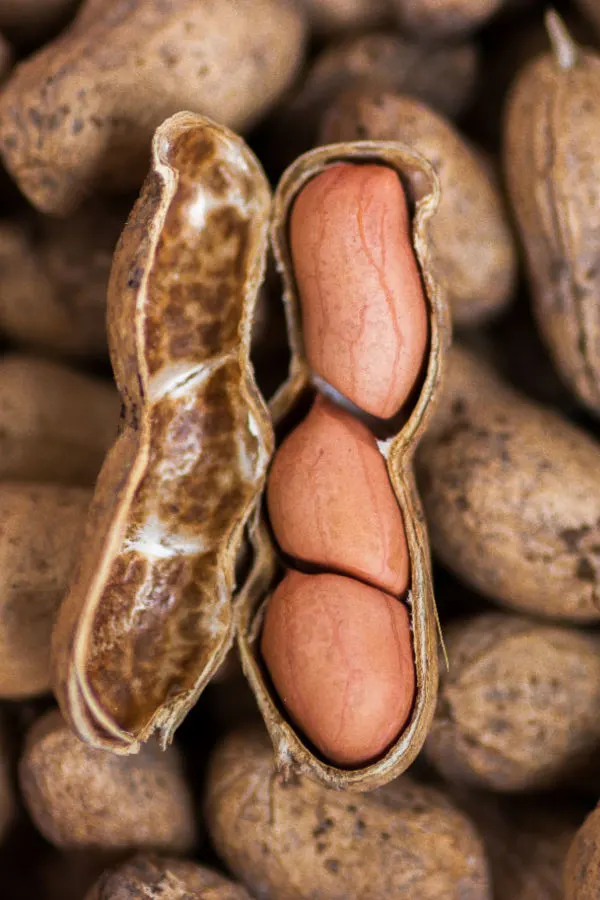
If using either LED or fluorescent bulbs, keep the bulbs a few inches above the plants as they grow. Give indoors seedlings a full 12 hours of light each day. See : How To Use Inexpensive LED Shop Lights To Start Seeds Indoors!
Once the weather has warmed it is time for planting outdoors into your pots! You don’t have to have huge containers to grow peanuts, but they do need to be deep. As long as your container is 18 to 24 inches in depth, it will work well. Large round pots and 5 gallon buckets both work great for peanut growing.
Transplanting Into The Container – How To Grow Peanuts In Pots & Containers
Fill the containers with potting soil to a height of 2 to 3 inches below the top of the container. Be sure that your container or bucket has drainage holes to allow excess water to escape. Affiliate Link: Espoma All Natural Potting Mix
Plant your peanut seedlings so that the top of the transplant is an inch down in the soil. Remember if planting seeds directly into the pot, plant at a depth of 2 inches. For spacing, leave 2 inches of space between each transplant or seed.
Peanut plants ideally requires warm and humid conditions. The containers should be placed in a spot that receives sunlight for at least 6 hours a day but is shielded from the wind. Remember if a frost is in the forecast, move your container indoors or protect it with a frost cover.
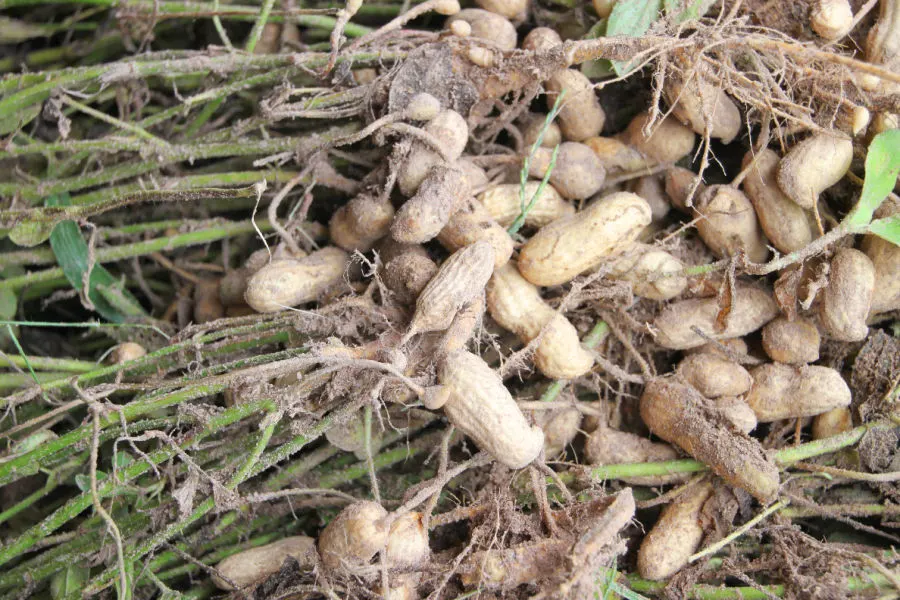
Peanuts like moisture so keep the soil in your container watered well. Unfortunately, over-watering can be an issue as well, rotting the peanuts out if too much moisture is present. The best rule of thumb to follow is to water the plant when the upper 1 inch of soil becomes dry.
Maintaining Your Peanut Plants In The Summer – How To Grow Peanuts In Pots & Containers
While a peanut plant doesn’t require a lot of work to maintain, there are a couple of simple things you can do to help it grow with more vigor and produce a better harvest.
For starters, once the plant reaches a height of 12 inches, add more soil to the container to fill it to the rim. This will help keep the base of the plant well-covered in soil, and allow the peanuts to form more easily.
Fertilizing is important as well for peanut production. Apply a well-balanced liquid or granular fertilizer once you notice the first blooms forming on the plant. This will help to power the blooms and also help the pegs to grow down into the soil.
For best results, use a well balanced fertilizer that does not have a higher nitrogen number. Too much nitrogen will promote foliage growth and not peanuts. Fertilize every few weeks for about 8 weeks after the first blooms begin to form. Affiliate Plant Link : Down to Earth Organic Vegetable Garden Fertilizer 4-4-4
Harvesting – How To Grow Peanuts In Pots & Containers
So how do you know when it is time to harvest your peanuts in your containers? Peanuts are ready for harvesting once the plant begins to turn yellow and starts to die back.

Simply pull the plant up from the soil with the peanuts still attached to it. At this point lay the peanuts up and out of the soil and allow them to dry for a week to ten days. One peanut plant can yield 25-35 peanuts., but in containers it is usually a bit less.
A lot of the harvest will depend on the temperature, light and the nutrition the plant gets. As for consuming, the nuts can be eaten raw after removing the shells. They can be boiled, roasted or dried to enjoy as well.
Here is to planting your very own crop of peanuts in pots and containers this year!
Follow Our Facebook Page For Great Gardening Tips And Advice! This Is My Garden Facebook Page
This Is My Garden is a garden website created by gardeners, for gardeners. Jim and Mary Competti have been writing gardening, DIY and recipe articles and books and speaking for over 15 years from their 46 acre Ohio farm. They publish three articles every week, 52 weeks a year. Sign up today to follow via email, or follow along!
